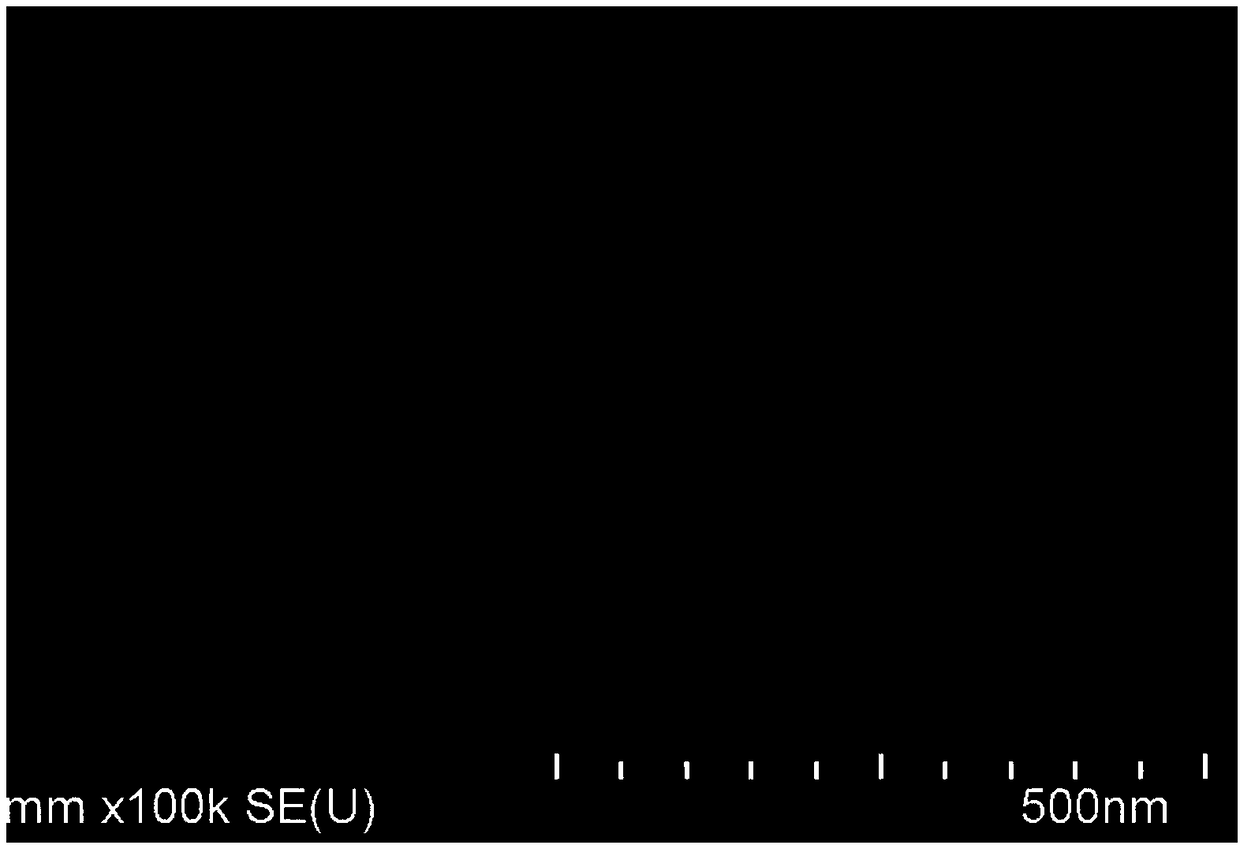Preparation method of 3D porous electrode and its application in electrochemical hydrogen evolution reaction
A porous electrode, 3D technology, applied in the field of energy storage, can solve the problems of not providing enough space for mass transfer, limited pore structure, high metal consumption, etc., and achieve the effect of small batch difference, short time and high catalytic performance
- Summary
- Abstract
- Description
- Claims
- Application Information
AI Technical Summary
Problems solved by technology
Method used
Image
Examples
Embodiment 1
[0089] The carbon cloth is acid washed with 0.5M sulfuric acid and washed with ethanol.
[0090] The treated carbon cloth was repeatedly immersed in a cobalt nitrate solution (0.1g / ml) 3 times. In the presence of melamine (8.2g), it undergoes the following pyrolysis process at 600°C for 1 hour and 700°C for 3.0 hours.
[0091] The scanning electron micrograph of the 3D porous electrode prepared in this example is shown in Figure 5a , It can be seen from the electron micrograph that the material prepared under this condition has a special structure of carbon tubes grown on the surface of carbon fibers in a large range, and the carbon tubes are short and evenly distributed. Figure 5b It is a transmission electron microscope image of a single carbon tube obtained after ultrasonication of the carbon cloth. It can be seen that the position of the end of the carbon tube peeled off by the ultrasound is wrapped with a piece of metal, and the diameter of the carbon tube is about 20nm. And...
Embodiment 2
[0093] The carbon cloth is acid washed with 0.5M sulfuric acid and washed with ethanol.
[0094] The treated carbon cloth was repeatedly immersed 6 times in a cobalt acetate solution (0.8 g / ml). In the presence of melamine (5.5g), it undergoes the following pyrolysis process at 600°C for 1 hour and 900°C for 1.5 hours.
[0095] The scanning electron micrograph of the 3D porous electrode prepared in this example is shown in Image 6 , It can be seen from the electron micrograph that the material prepared under this condition has a special structure of carbon tubes grown on the surface of carbon fibers in a large range, and the carbon tubes are short and evenly distributed.
Embodiment 3
[0097] The carbon cloth is acid washed with 0.5M sulfuric acid and washed with ethanol.
[0098] The treated carbon cloth was repeatedly immersed in a cobalt sulfate solution (0.7 g / ml) 3 times. In the presence of melamine (5g), it undergoes the following pyrolysis process at 600°C for 1 hour and 900°C for 3.5 hours.
[0099] The scanning electron micrograph of the 3D porous electrode prepared in this example is shown in Figure 7 , It can be seen from the electron micrograph that the material prepared under this condition has a special structure of carbon tubes grown on the surface of carbon fibers in a large range, and the carbon tubes are short and evenly distributed.
PUM
| Property | Measurement | Unit |
|---|---|---|
| specific surface area | aaaaa | aaaaa |
| diameter | aaaaa | aaaaa |
Abstract
Description
Claims
Application Information
 Login to View More
Login to View More - Generate Ideas
- Intellectual Property
- Life Sciences
- Materials
- Tech Scout
- Unparalleled Data Quality
- Higher Quality Content
- 60% Fewer Hallucinations
Browse by: Latest US Patents, China's latest patents, Technical Efficacy Thesaurus, Application Domain, Technology Topic, Popular Technical Reports.
© 2025 PatSnap. All rights reserved.Legal|Privacy policy|Modern Slavery Act Transparency Statement|Sitemap|About US| Contact US: help@patsnap.com



